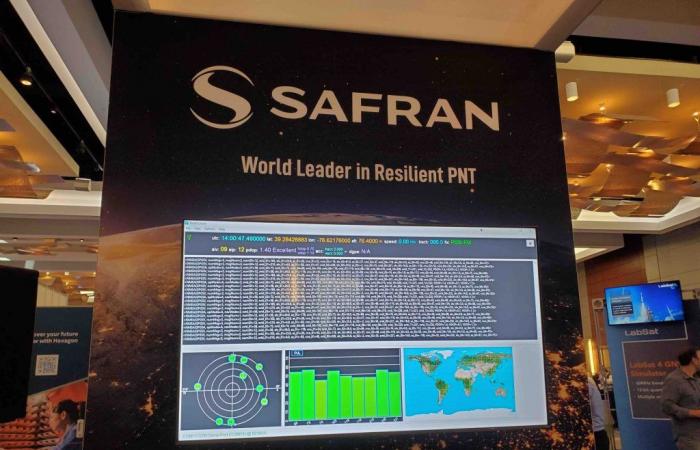Safran Electronics & Defense made various announcements at ION GNSS+ in Baltimore, including the launch of the GSG-8 Gen2.
The simulator is the latest evolution of the company’s GSG simulator series, building on the success of the GSG-8, according to the company. The upgraded simulator offers improvements in capabilities, operability and performance, providing a high-end solution for multi-antenna/vehicle and jamming/spoofing scenarios.
The GSG-8 Gen2 offers a higher signal capacity, with the ability to generate up to 2,000 signals. It’s well suited for aerospace, defense, and transportation applications, particularly for simulating medium Earth orbit (MEO) and low Earth orbit (LEO) constellations simultaneously.
The easy-to-use simulator, which features a user friendly interface, supports advanced simulation scenarios, including NavWar, jamming and spoofing, space-based and LEO PNT.
Safran also announced the availability of Xona Space Systems’ PULSAR XL on Skydel simulation software. The Skydel GNSS simulation engine has enhanced LEO PNT capabilities, enabling users to accurately simulate satellite constellations in LEO. Developers and engineers can now test and validate their systems for various applications, including autonomous vehicles, drones and space missions.
Xona’s PULSAR is a high-performance satellite navigation and timing system designed to deliver a secure, high-powered signal from the company’s LEO satellites. LEO satellites are closer to the Earth than GNSS, making their signals stronger. This reduces the threat of jamming and spoofing, a growing problem for traditional GNSS.
“Skydel’s implementation of PULSAR signals is a major milestone for the GNSS community,” said Bryan Chan, co-founder and VP of strategy at Xona, according to a news release. “This new capability empowers receiver manufacturers to showcase Xona PULSAR’s unique LEO PNT value propositions to the end consumer, in applications ranging from heavy industry to the mass market.”
Joshua Morales, CEO of StarNav, was one of the many presenters who gave a talk at the Safran booth during ION GNSS+. Using a simulated Xona PULSAR signal output by a Safran GSG-8 simulator, Morales demonstrated a StarNav receiver achieving a cold start for the PULSAR signal in real time, a first. StarNav develops receivers for emerging PNT constellations and signals of opportunity.
Morales was able to show 13 satellites being tracked simultaneously, demonstrating a real-time, accurate positioning solution.
The simulator and receiver enable the industry to prepare for and fine tune this new LEO capability, Morales said, which augments vulnerable GPS. Xona’s high-powered smallsat signals improves PNT resilience and accuracy, operating with an independent navigation and timing system architecture.
“GPS is being attacked, either intentionally or unintentionally,” Morales said. “This brings on an additional source in a different frequency band to augment PNT.”






